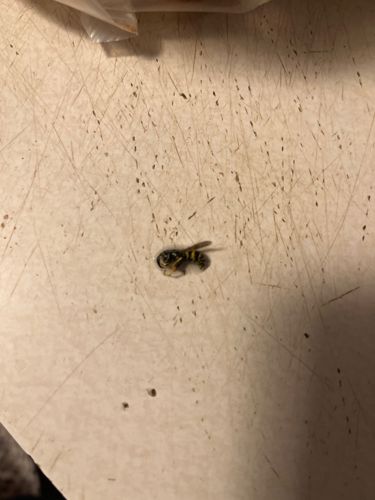Yellowjacket
Scientific Name: Vespula spp. or Dolichovespula spp.
Order & Family: Order: Hymenoptera, Family: Vespidae
Size: Typically 10-16 mm (0.4-0.6 inches) for workers, queens can be larger (up to 20 mm or 0.8 inches).

Natural Habitat
Yellowjackets build nests in various locations, including underground in abandoned rodent burrows, in tree cavities, wall voids of buildings, or in bushes and low-hanging vegetation. They are commonly found in temperate regions worldwide, often near human habitation due to abundant food sources.
Diet & Feeding
Adult yellowjackets feed on nectars, fruits, and sugary substances. They are also predatory, hunting other insects, caterpillars, and spiders to feed their larvae. Larvae, in turn, excrete a sugary substance that adults consume.
Behavior Patterns
Yellowjackets are social insects living in colonies with a queen, workers, and drones. They are known for their aggressive defense of the nest, especially when disturbed. Foraging workers are often seen flying in zig-zag patterns near food sources. Queens emerge from hibernation in spring to start new nests, which grow throughout the summer.
Risks & Benefits
Risks: Yellowjackets are highly defensive of their nests and can deliver painful stings. Unlike bees, they can sting multiple times. Their stings can cause localized swelling and pain, and in individuals allergic to their venom, they can trigger severe anaphylactic reactions. Benefits: They are beneficial predators, controlling populations of many pest insects, including flies and caterpillars, which helps in agriculture and gardening. They also act as pollinators, although less efficiently than bees.
Identified on: 8/24/2025